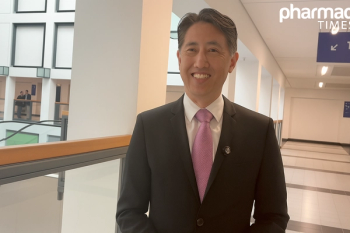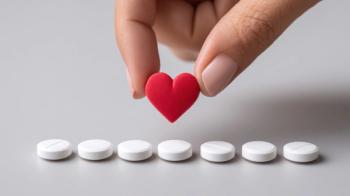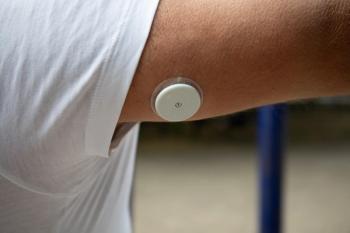
10 Surprising Off-Label Uses for Prescription Medications
How many of these off-label uses have you seen before?
Off-label prescribing has been under scrutiny since a recent study found that medications prescribed for non-FDA-approved uses are associated with a significantly higher rate of negative side effects.
It is estimated that up to 20% of all medications prescribed are for indications that are not approved by the FDA.
In the study, which was published in JAMA Internal Medicine, the rate of side effects for off-label drugs was 44% higher than on-label ones.
Although there is sometimes strong scientific evidence to support an off-label use, the study found that about 80% of the examined off-label prescriptions were not supported by strong scientific evidence. Most common among them were antidepressants, antipsychotics, and anticonvulsants.
Here is a list of 10 surprising off-label uses for prescription drugs:
1. Prazosin (Minipress) for Nightmares
Prazosin is approved for the use of hypertension, but it is also used to treat nightmares related to post-traumatic stress disorder (PTSD).
A 2012 systematic review showed a small but positive benefit of using prazosin for the treatment of PTSD-associated night terrors.
Other non-FDA-approved uses for prazosin include the treatment of Raynaud’s disease and poisoning due to scorpion venom.
2. Clomiphene (Clomid) for Male Infertility
Clomiphene is approved for female infertility due to ovulatory disorder, so seeing the medication prescribed for men may raise some eyebrows.
However, clomiphene has been studied in men dating back to the 1980s.
A more recent 2007 study showed that 3 months of clomiphene treatment improved sperm count, motility, and morphology in men with a low sperm count.
3. Memantine (Namenda) for OCD
Due to increasing evidence of glutamate’s involvement in the pathophysiology of obsessive-compulsive disorder (OCD), some investigators have hypothesized that a drug modulating glutamate release, such as memantine, may be effective.
Two recent open-label case series suggest that the addition of memantine to standard medication therapy can benefit both children and adults with OCD. Preliminary studies also showed adjunctive memantine improved a number of different attention-deficit/hyperactivity disorder (ADHD) measures.
Namenda is approved for the treatment of Alzheimer’s disease.
4. Clonidine (Catapres) for ADHD
Although clonidine is approved and commonly used for the treatment of hypertension, it also has a number of off-label uses, including ADHD.
Other off-label uses include cancer pain, hot sweats, certain psychiatric disorders, nicotine dependence, opioid withdrawal, migraine headaches, and restless leg syndrome.
5. Quetiapine (Seroquel) for Insomnia
Despite the fact that quetiapine can result in a number of serious side effects, it is often prescribed for the treatment of chronic insomnia.
In a retrospective evaluation, off-label use of antipsychotics as a class increased from 4.4 million treatment-related visits in 1995 to 9 million in 2008.
Due to the inconclusive evidence and the risk of harm due to adverse effects, the National Institutes of Health does not recommend atypical antipsychotics for treating chronic insomnia.
Quetiapine is approved for the treatment of schizophrenia and bipolar disorder.
6. Naltrexone (Revia) for Behavioral Addiction
Oral naltrexone is approved for the treatment of alcohol and opioid dependence, but it has some interesting off-label uses.
There is preliminary evidence that naltrexone might be beneficial in the treatment of impulse control disorders such as kleptomania, compulsive gambling, or trichotillomania (compulsive hair pulling). Other off-label uses include preventing self-injurious behavior and treatment of fibromyalgia.
There is some belief that low-dose naltrexone may benefit the treatment of cancer, HIV, and multiple sclerosis by “normalizing” the immune system; however, current data is lacking.
7. Colchicine (Colcrys) for Pericarditis
Colchicine is indicated for the treatment and prevention of gout, though it is also generally considered first-line treatment for acute pericarditis, as well as preventing recurrent episodes.
Although the exact mechanism of colchicine is not fully understood, its anti-inflammatory effect for pericarditis appears to be related to its ability to inhibit microtubule self-assembly, resulting in decreased leucocyte motility and phagocytosis.
Other non-FDA-approved uses include actinic keratosis, amyloidosis, Peyronie’s disease, and psoriasis.
8. Propranolol (Inderal) for Performance Anxiety
Propranolol is a non-selective beta-blocker used for the treatment of hypertension and the prophylaxis of angina pectoris.
In 1991, a published study showed that a single dose of propranolol immediately before the Scholastic Aptitude Test (SAT) significantly improved performance in high school students prone to cognitive dysfunction due to test anxiety.
In addition to test taking, propranolol has been tested for public speaking, performing surgery, musical recitals, and sports, all with varying degrees of benefit.
Other off-label uses for propranolol include the treatment of thyroid storm, portal hypertension, and neuroleptic-induced akathisia.
9. Sildenafil (Viagra) for Female Sexual Arousal Disorder
While Viagra is approved for the treatment of men with erectile dysfunction, there is some evidence showing that it may be effective for the off-label treatment of female sexual arousal disorder.
Although the exact mechanism is not fully understood, a 2004 study found sildenafil improved the clitoral and uterine blood flow in healthy postmenopausal women without any erotic stimulus.
Furthermore, sildenafil treatment for sexual dysfunction in women taking serotonin reuptake inhibitors was shown to be associated with a reduction in adverse sexual effects.
10. Modafinil (Provigil) for Depression
Modafinil is approved to treat sleep disorders, but it may also have some benefit in treating depression.
A 2013 meta-analysis of 6 studies and 910 individuals with major depressive disorder or bipolar depression found that augmentation of modafinil was effective in reducing acute depressive episodes.
During a retrospective look back using the National Ambulatory Medical Care Survey, researches found that from 2002 to 2009, off-label modafinil use increased more than 15-fold.
References
- Aboujaoude E, Barry J, Gamel N. Memantine augmentation in treatment-resistant obsessive-compulsive disorder: an open-label trial. J Clin Psychopharmacol. 2009 Feb;29(1):51-5.
- Eguale T, Buckeridge D, Verma A, et al. Association of off-label drug use and adverse drug events in an adult population. JAMA Intern Med. 2016 Jan 1;176(1):55-63.
- Faigel HC. The effect of beta blockade on stress-induced cognitive dysfunction in adolescents. Clin Pediatr (Phila). 1991 Jul;30(7):441-5.
- Goss A, Kaser M, Costafreda S, et al. Modafinil augmentation therapy in unipolar and bipolar depression: a systematic review and meta-analysis of randomized controlled trials. J Clin Psychiatry. 2013 Nov;74(11):1101-7.
- Kung S, Espinel Z, Lapida M. Treatment of nightmares with prazosin: a systematic review. Mayo Clin Proc. 2012 Sep; 87(9): 890—900.
- Off-label drug prescribing: what does it mean for you? Consumer Reports. July 2012. Accessed January 1, 2016.
- Park SH. Off-label use of atypical antipsychotics: lack of evidence for their use in primary insomnia. Modern Medicine Network. November 8, 2013. Accessed January 1, 2016.
- Patankar S, Kaore S, Sawane M, et al. Effect of clomiphene citrate on sperm density in male partners of infertile couples. Indian J Physiol Pharmacol. 2007 Apr-Jun;51(2):195-8.
- Ramaswamy S, Mattai A, Wilson D. Modafinil: Not just for sleep disorders? Current Psychiatry. 2007 Nov;6(11).
- Saltzman H, Weitz H. Should all patients with acute pericarditis be treated with colchicine? Cleveland Clinic One-Minute Consult. 2007 May;75(5):385-6.
Newsletter
Stay informed on drug updates, treatment guidelines, and pharmacy practice trends—subscribe to Pharmacy Times for weekly clinical insights.

















































































































































































































